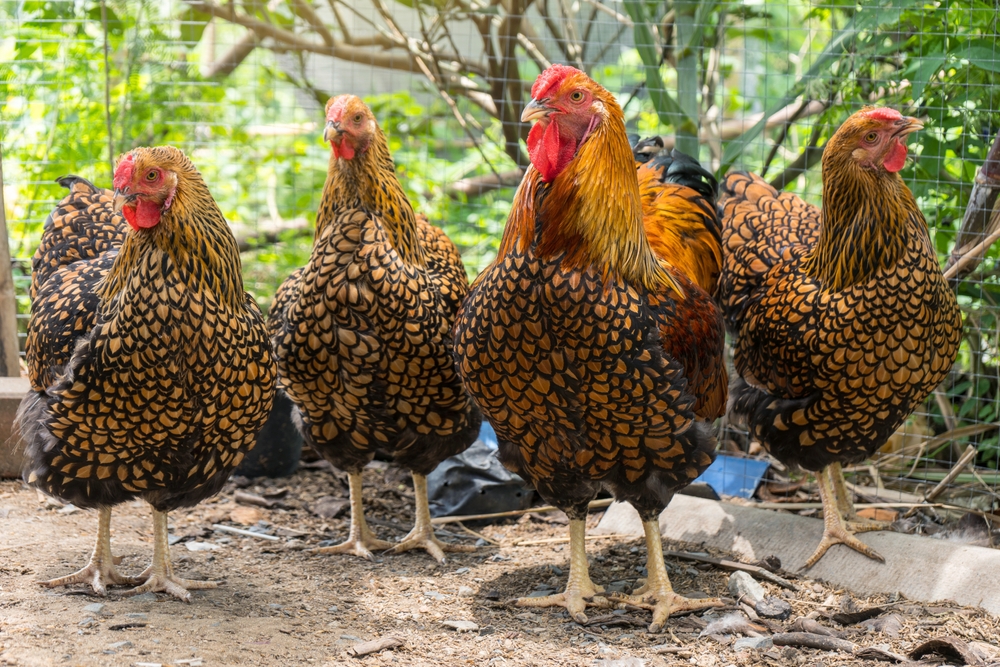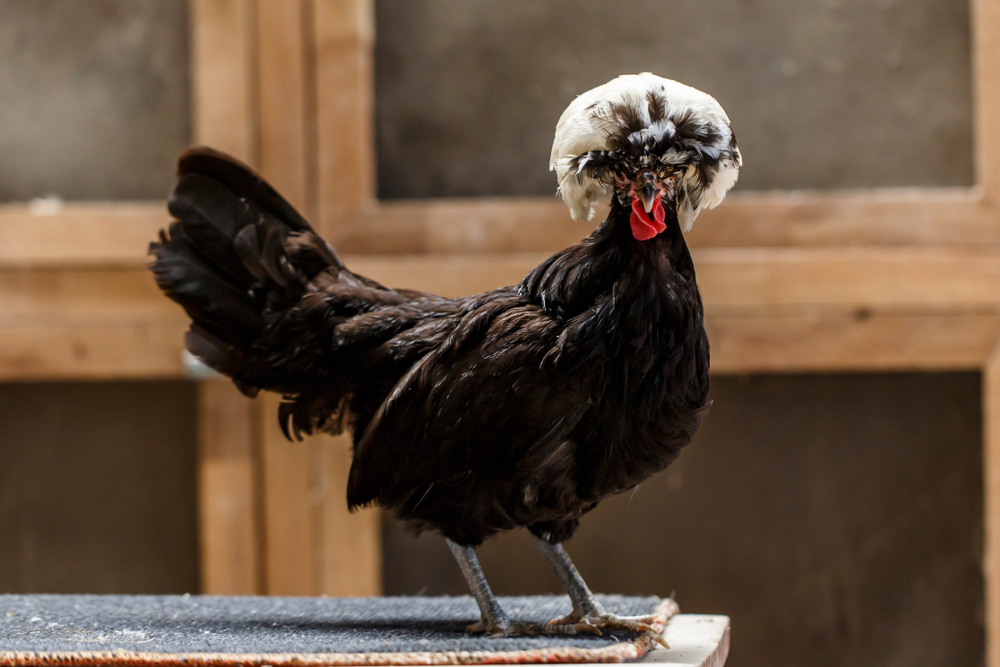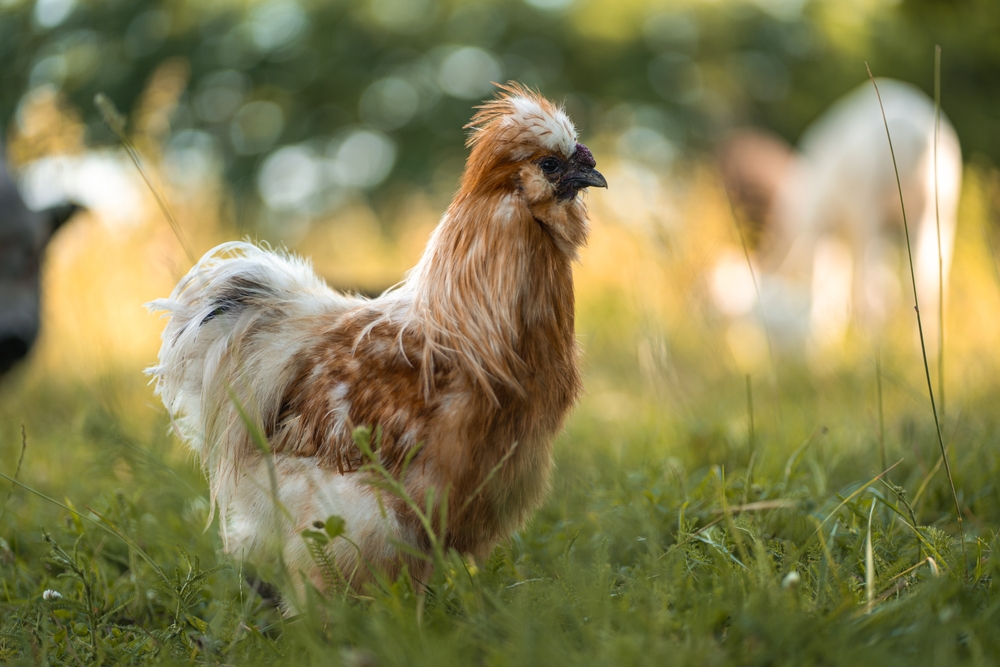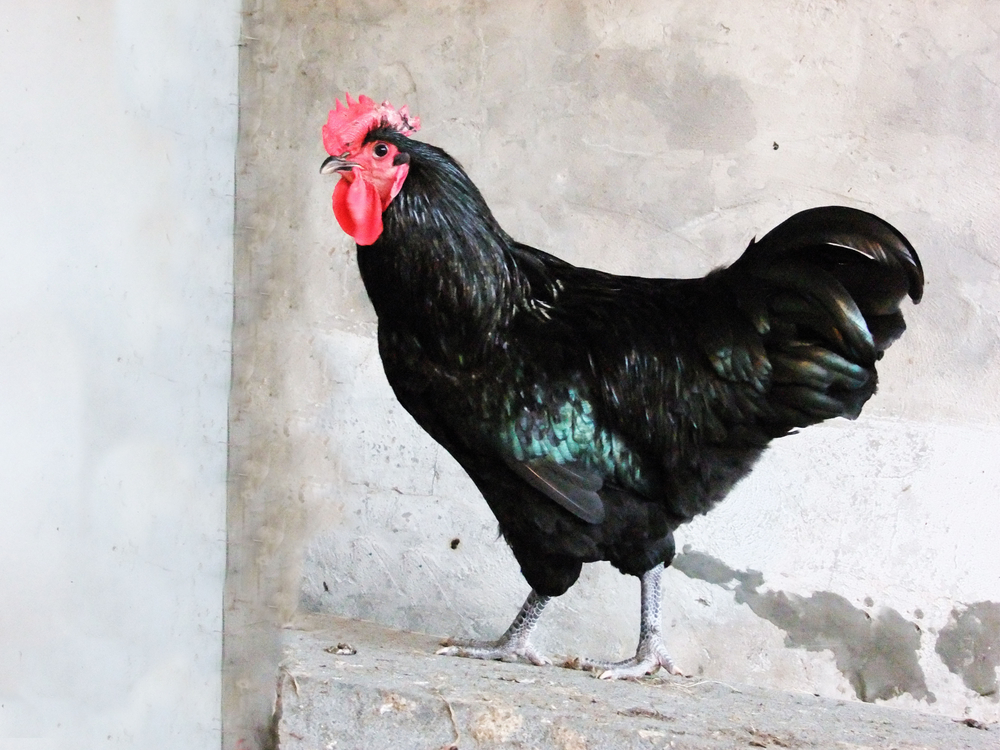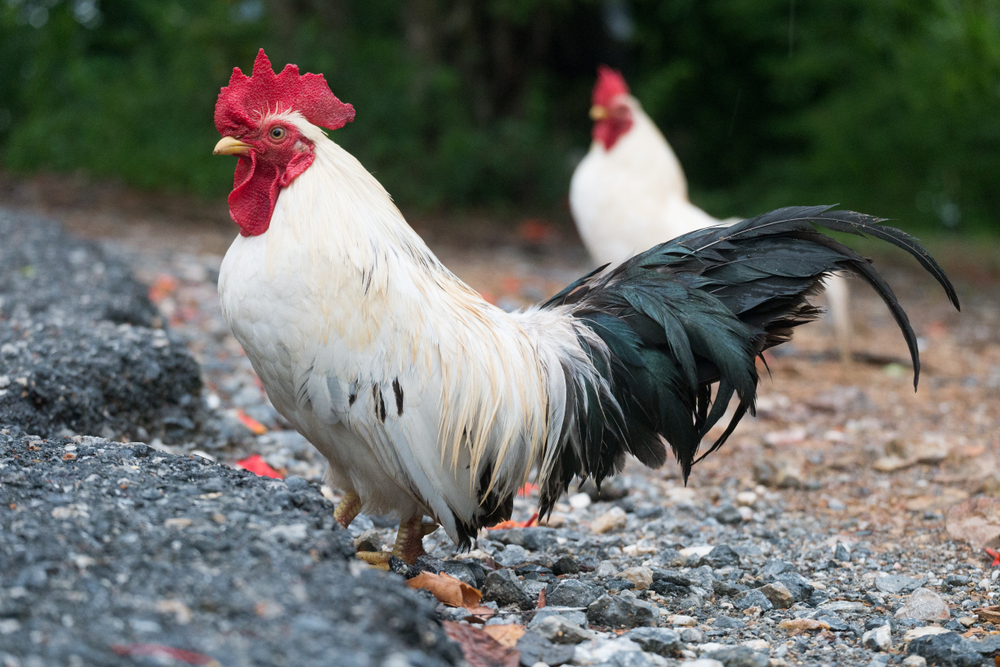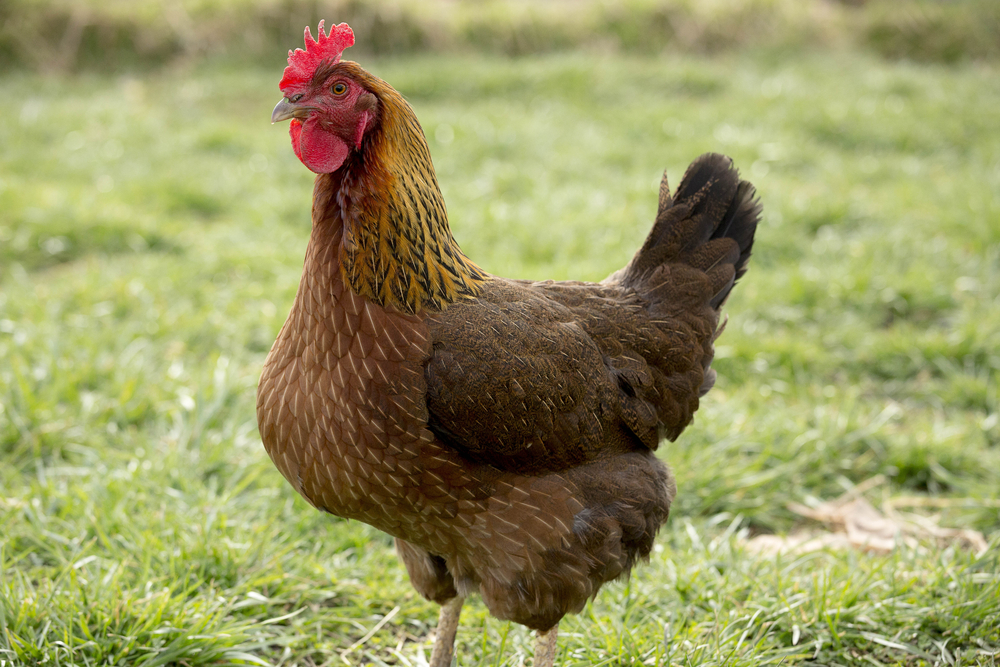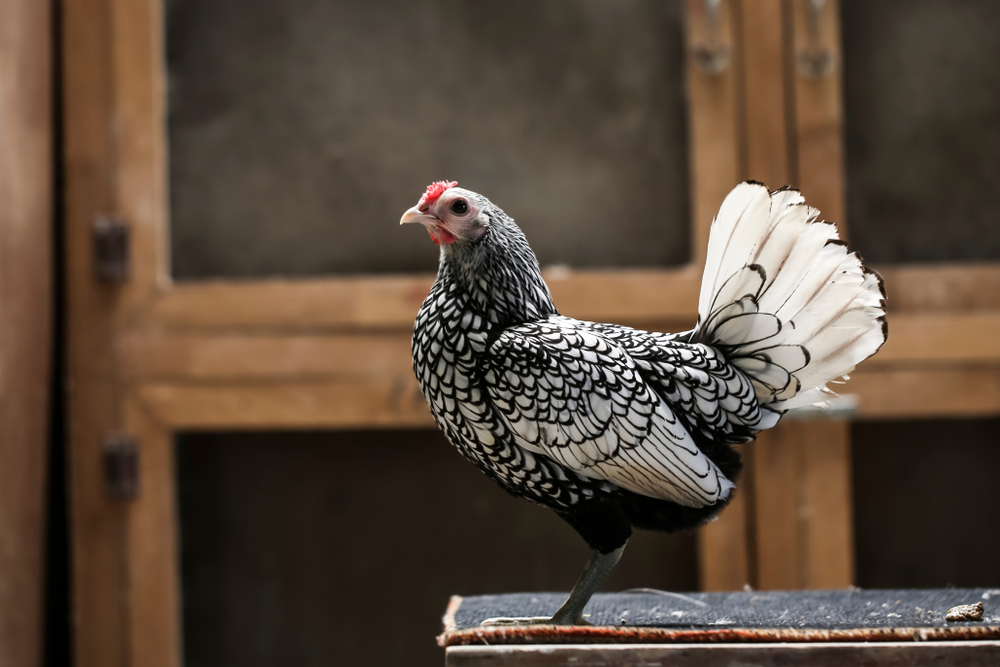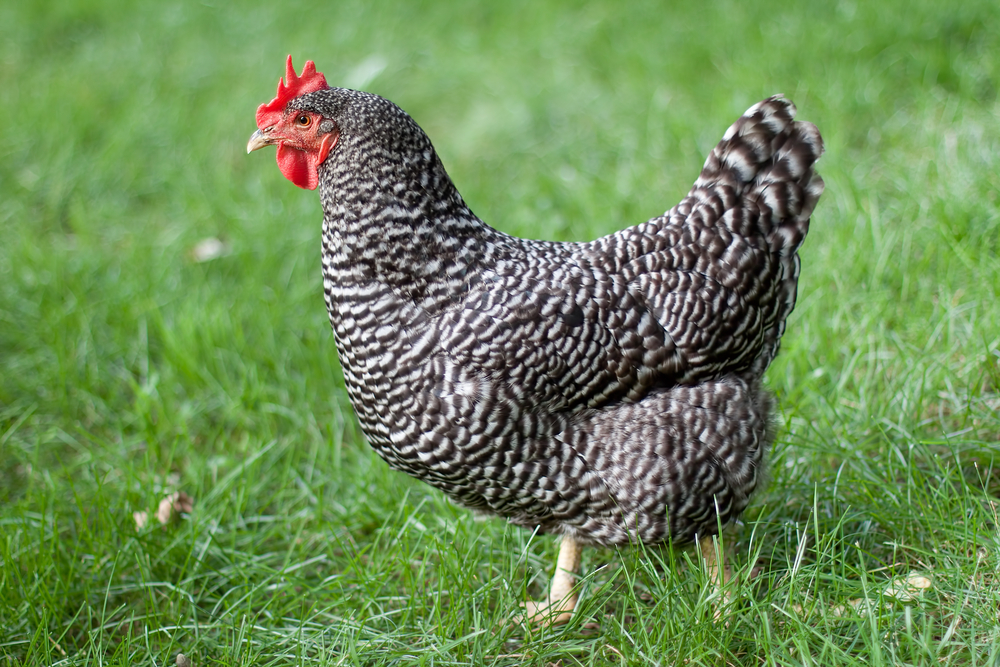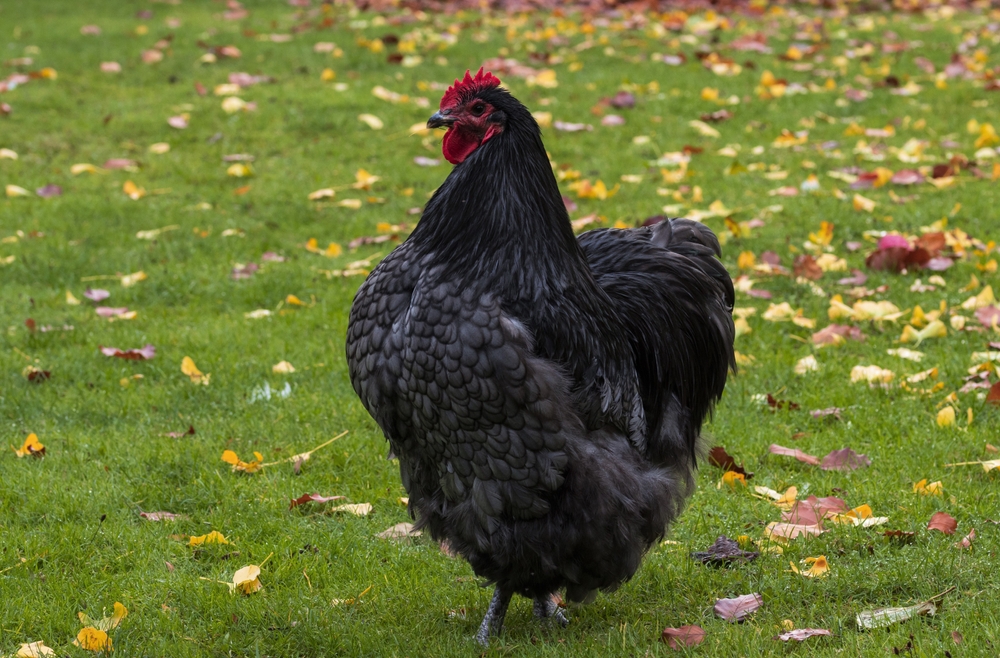The closest related breed to the Wyandotte is the Plymouth Rock, another American dual-purpose chicken developed in the same era. Both share cold-hardiness, steady egg production, and a calm temperament, but Wyandottes have a rose comb and often feature intricate laced plumage, while Plymouth Rocks are most famous for their barred feather pattern.
About
The Wyandotte is a versatile and attractive American chicken breed developed in the United States in the late 19th century. Bred as a dual-purpose bird, it offers both dependable egg production and quality meat, while also being a favorite in the show ring due to its striking plumage patterns.
Wyandottes are medium to large-sized, with roosters weighing about 3.4–3.9 kg (7.5–8.5 lbs) and hens around 2.7–3.2 kg (6–7 lbs). They have a rounded body, full breast, and a distinctive rose comb that is less prone to frostbite, making them well-suited to colder climates.
Their plumage comes in many beautiful color varieties, including silver-laced, gold-laced, blue, buff, black, and partridge. The silver-laced variety, with white feathers edged in black, is the most iconic and widely recognized. Their dense, close-fitting feathers not only enhance their looks but also provide good insulation.
Wyandottes are reliable layers, producing 200–240 large brown eggs annually. They are generally calm, friendly, and adaptable, thriving in both free-range and confined systems. Their hardiness and productivity have made them a popular choice for small farms and backyard flocks.
Beyond their utility, Wyandottes are valued for their ornamental appeal and are frequently exhibited at poultry shows. They are easy to care for, making them an excellent breed for beginner and experienced keepers alike.
The Wyandotte’s scientific classification is Gallus gallus domesticus, and it belongs to the family Phasianidae.
Physical Characteristics
Plumage:
Wyandottes have dense, close-fitting plumage with a soft underlayer, giving them a full, rounded appearance. They are recognized in multiple striking color varieties, including Silver Laced, Gold Laced, Columbian, Blue, Buff, Partridge, Black, and White. The laced varieties are especially prized for their crisp feather edging, which creates a scalloped pattern across the body.
Head and Comb:
The head is moderately small and broad, topped with a rose comb—a flat, low-profile comb with a textured surface ending in a small upward spike at the rear. The comb, wattles, and earlobes are bright red. The beak is short, stout, and yellow to horn-colored. Eyes are reddish bay, providing a bright, alert look.
Body:
The Wyandotte has a broad, deep, and well-rounded body with a short back and full breast. The breed’s shape is described as “U-shaped” when viewed from the side, with a smoothly curving backline from neck to tail.
Legs and Feet:
The legs are sturdy, clean (feather-free), and yellow in color, set wide apart for balance. Each foot has four strong toes. Shanks are of medium length, supporting the bird’s heavy build.
Tail:
The tail is moderately short, well spread, and carried at a slight upward angle. Roosters have well-arched sickle feathers, while hens have a more compact tail.
Size:
-
Male Weight: 8.5 lbs (3.9 kg)
-
Female Weight: 6.5 lbs (3 kg)
-
Bantam Variety: Males around 36 oz (1.02 kg), females around 32 oz (0.91 kg)
Sexual Dimorphism:
Males are larger with more iridescent plumage, longer tail sickles, and pointed hackle and saddle feathers. Females are more rounded with shorter tail feathers and slightly duller coloration.
The Wyandotte’s broad, curving body shape, rose comb, and beautifully patterned plumage make it both a visually striking and highly functional dual-purpose heritage breed.
Reproduction
Mating Behavior:
Wyandotte roosters are typically confident but steady breeders, showing calm courtship behavior such as tidbitting and gentle herding of hens. They adapt well to both free-range and confined breeding setups. A breeding ratio of 1 rooster for every 8–10 hens ensures good fertility without overmating.
Breeding Season:
They can breed year-round in mild climates, but fertility and hatch rates are highest in spring and early summer. Wyandottes are cold-hardy, so they can continue breeding effectively in cooler months compared to lighter breeds.
Egg Laying:
Wyandotte hens are dependable, year-round layers of brown eggs.
-
Annual Output: 180 to 240 large eggs per year.
-
Egg Color: Light to medium brown.
-
Egg Size: Large.
They maintain good production even in winter with proper care.
Broodiness and Incubation:
-
Wyandotte hens are moderately broody, making them reliable natural setters when broodiness occurs.
-
They are attentive, protective mothers, raising strong, healthy chicks.
-
Incubation Period: About 21 days.
Chicks:
-
Appearance at Hatch: Fluffy with down colors varying by variety—often shades of brown, black, or yellow with markings.
-
Self-Sufficiency: Hardy and active soon after hatching, with good foraging instincts.
-
Growth Rate: Moderate to fast, developing well-muscled bodies and abundant feathering quickly.
Maturity:
Pullets generally start laying at 5 to 6 months, and roosters reach breeding maturity at a similar age.
The Wyandotte’s steady fertility, reliable laying, and good mothering ability make it a practical choice for sustainable backyard or farm breeding programs.
Lifespan
Lifespan in the Farm/Backyard Setting:
Wyandottes typically live 6 to 9 years with proper care. They remain productive layers for the first 3 to 4 years, after which egg production gradually declines, though they continue to be hardy and active well into older age.
Lifespan in Optimal Conditions:
With excellent nutrition, secure housing, and regular health management, Wyandottes can exceed their average lifespan.
-
Average Maximum Lifespan: 9 to 12 years
-
Exceptional cases: 12+ years, especially when kept in low-stress environments or as non-production birds.
Threats to Longevity:
-
Predation: Vulnerable to hawks, owls, foxes, and raccoons when free-ranging, though their alert nature helps them avoid some threats.
-
Reproductive Strain: Continuous laying over multiple years can lead to reproductive issues such as egg binding, peritonitis, or prolapse.
-
Parasites and Disease: Susceptible to mites, lice, and worms without preventative care; can also be affected by respiratory illnesses if housed in damp or poorly ventilated areas.
-
Obesity Risk: Their calm nature and hearty appetite can lead to excess weight if overfed, which can shorten lifespan.
Adaptations for Longevity:
Wyandottes are cold-hardy, disease-resistant, and adaptable, making them long-lived compared to many production breeds. Their dense feathering protects them in cold climates, and their even temperament reduces injury from flock disputes.
Eating Habits
Diet:
Wyandottes are omnivorous and adaptable feeders, thriving on a mix of commercial poultry feed and naturally foraged foods.
-
Primary Feed: High-quality layer pellets or mash containing 16–18% protein, plus added calcium for eggshell strength.
-
Foraged Foods: Insects, worms, beetles, seeds, grasses, and weeds gathered while ranging.
-
Treats and Supplements: Whole grains (wheat, oats, corn), leafy greens, vegetable scraps, grit for digestion, and oyster shell or limestone for calcium.
Feeding Behavior:
-
Wyandottes are steady and efficient eaters with good foraging skills.
-
They balance feed intake with natural food gathering when free-ranging.
-
Calm at feeders, but their sturdy build gives them presence in mixed flocks, ensuring they get their share.
Foraging Times:
-
Most active during morning and late afternoon, spending midday resting or dust-bathing.
-
In cooler climates, they will forage for most of the day.
Adaptations for Feeding:
-
Strong, slightly curved beak ideal for cracking seeds and digging for invertebrates.
-
Dense plumage allows them to forage comfortably in cooler or damp weather.
-
Good feed efficiency, maintaining production without excessive consumption.
Captive Diet Management:
-
Maintain a balanced diet year-round to keep up egg production and feather quality.
-
Limit high-fat treats to prevent weight gain, which can reduce laying efficiency and mobility.
-
Provide fresh, clean water daily, especially in winter when hydration can drop.
Wyandottes’ balanced diet needs, calm feeding habits, and efficient foraging ability make them a dependable, low-maintenance choice for both backyard and farm settings.
Uniqueness
Rose Comb for Cold Hardiness:
The Wyandotte’s low, flat rose comb is less prone to frostbite than the tall single combs of many breeds, making it exceptionally well-suited for cold climates.
Beautiful Laced Plumage:
Varieties such as the Silver Laced and Gold Laced feature intricate black edging on every feather, creating one of the most striking patterns in poultry.
True American Heritage Breed:
Developed in the United States in the late 1800s, the Wyandotte was created as a dual-purpose bird with equal value for eggs and meat, becoming a staple on American farms.
U-Shaped Body Profile:
The breed’s rounded “U” silhouette, combined with a full breast and short back, gives it a distinctive, well-balanced appearance in the show ring and barnyard alike.
Year-Round Laying Ability:
Wyandottes are reliable layers that continue producing eggs through the winter when many breeds slow or stop.
Wide Range of Color Varieties:
Recognized in numerous colors—Silver Laced, Gold Laced, Blue, Buff, Columbian, Partridge, Black, and White—making them appealing to both utility keepers and poultry exhibitors.
The Wyandotte’s combination of beauty, cold tolerance, and dependable utility has made it one of the most popular and enduring dual-purpose breeds in North America.
Be the First to Share Photos of This Species.
FAQ’s
1. What is the closest species to the Wyandotte?
2. How does the Wyandotte compare to other chickens?
The Wyandotte stands out from most breeds in several ways:
-
Cold-Hardy Comb: Its rose comb is less prone to frostbite than the single combs of many breeds.
-
Body Shape: The signature U-shaped profile is unique among dual-purpose breeds.
-
Plumage Variety: Offers some of the most striking feather patterns in poultry, especially in laced varieties.
-
Year-Round Laying: Maintains good winter egg production compared to lighter, more seasonal layers.
-
Temperament: Calm but confident, able to hold its own in mixed flocks without aggression.
3. What national parks provide the best chances to see a Wyandotte?
As a domesticated heritage breed, Wyandottes are not found in the wild. However, they can be seen in heritage farms, agricultural museums, and rare breed conservation programs, such as:
-
Old Sturbridge Village (Massachusetts, USA)
-
Billings Farm & Museum (Vermont, USA)
-
Colonial Williamsburg Rare Breeds Program (Virginia, USA)
-
Weald & Downland Living Museum (West Sussex, UK)
-
Beamish Open Air Museum (County Durham, UK)
These locations showcase Wyandottes as part of living history and agricultural heritage exhibits.



































































